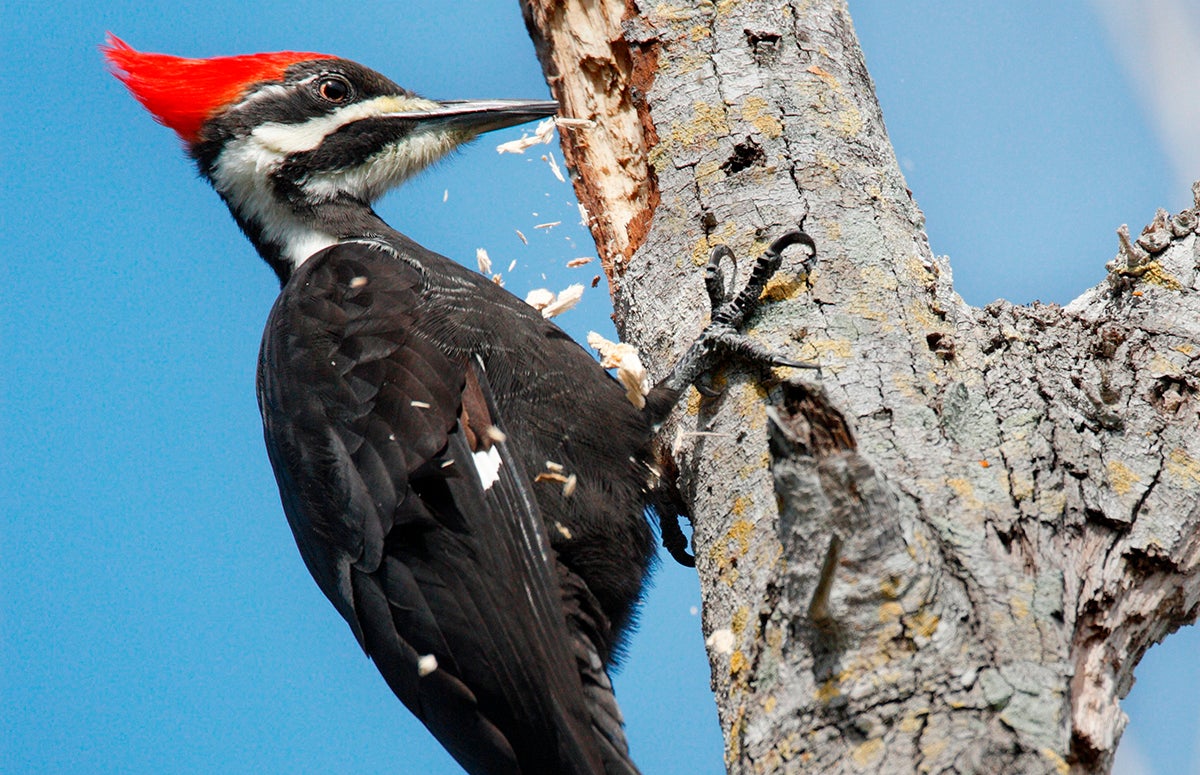Woodpeckers in Florida: Nature, Ecology, and Preservation
Woodpeckers in Florida: Nature, Ecology, and Preservation
Blog Article
Unveiling the Keys of Woodpeckers: Behavior, Habitat, and Extra
Woodpeckers, with their unique behaviors and specialized adaptations, have lengthy fascinated scientists and nature fanatics alike. By revealing the enigmas bordering woodpeckers' habits and habitat options, a deeper understanding of these bird marvels arises, using a peek into their fascinating globe.
Woodpecker Actions Insights
In taking a look at woodpecker behavior, a remarkable display of specialized abilities and adaptations emerges, losing light on their exceptional ecological specific niche. Woodpeckers, known for their distinct drumming on trees, possess a range of behavioral qualities that contribute to their survival and success in their atmosphere.
Furthermore, woodpeckers display an unique feeding habits identified by their ability to remove insects from tree bark using their specialized beaks. Their lengthy, barbed tongues aid in catching target, while their strong neck muscle mass provide stability and accuracy throughout pecking motions. This feeding method allows woodpeckers to gain access to surprise insect larvae and extract them with amazing performance.
Environment Preferences and Selection
What aspects affect the habitat preferences and choice of woodpeckers? Woodpeckers are extremely versatile birds known to occupy different settings worldwide. They do display choices for particular environment characteristics. One important aspect affecting woodpecker environment option is the availability of suitable nesting sites. Woodpeckers usually like woodlands with a mix of fully grown trees that give enough opportunities for cavity excavation. These cavities function as essential nesting and roosting websites for woodpeckers and are crucial for their reproducing success.
In addition, woodpeckers reveal a preference for environments with a bountiful supply of food sources. They are mainly insectivorous, feeding on beetles, ants, larvae, and other pests located in rotting wood or tree bark. Woodpeckers tend to prefer woody areas with a varied insect population to fulfill their nutritional needs.
Moreover, the visibility of dead or rotting trees is another vital aspect in woodpecker habitat option. These trees not just offer food resources however additionally offer ideal substrate for tooth cavity excavation. Dead trees are essential for the maintenance of healthy and balanced woodpecker populaces, as they play a vital role in the woodpeckers' life cycle and ecological community characteristics.
Feeding Habits and Diet Plan Structure
Woodpeckers demonstrate a specialized feeding habits focused on foraging for bugs within different habitats. In addition to bugs, woodpeckers also consume tree sap, fruits, nuts, and seeds, including selection to their right here diet depending on the period and schedule of food resources.
The foraging strategies of woodpeckers are well-adapted to their arboreal way of living (Woodpeckers in Florida). Their capability to excavate wood not only offers them with food but additionally aids in producing nesting cavities and establishing regions. Woodpeckers play a vital function in preserving the health and wellness of woodlands by controlling insect go to this website populaces and assisting in the decay of wood. Understanding their feeding routines and diet plan composition is vital for conservation initiatives focused on preserving these unique and valuable birds.
Drumming Appears and Interaction
Using quick drumming noises on various surface areas, woodpeckers employ a distinct kind of interaction to signify territory boundaries and attract mates. This drumming habits is not only a means of communication yet additionally works as a means for woodpeckers to develop their existence within a certain location. The strength, rate, and pattern of the drumming can share important information to other woodpeckers around.
Woodpeckers make use of drumming audios to reveal their presence in a territory and to advise off potential intruders. The loud and recurring nature of the drumming acts as a clear signal to other woodpeckers that the location is currently asserted. This helps in decreasing disputes and lessening physical battles in between individuals.

Survival Adaptations and Specialized Composition

Final Thought
In final thought, woodpeckers display special habits, such as drumming sounds for communication, and have actually specialized anatomy for survival in their selected habitats. Their feeding routines and diet plan composition further demonstrate their versatility to numerous atmospheres. By understanding these elements of woodpeckers, researchers and preservationists can better safeguard and protect these fascinating birds and their ecological communities.
Report this page